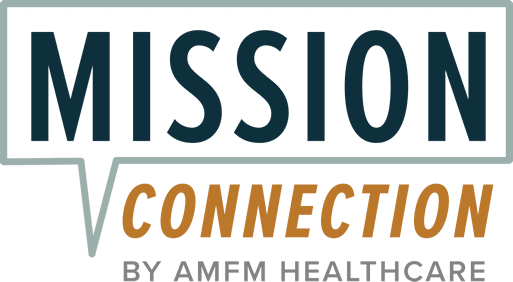Muscle Tension & Trembling in Adults: Stress, Anxiety, and Treatment

Anxiety is a mental health condition that can not only impact thoughts and emotions, but also our bodies and physical responses. This is because physical symptoms of anxiety are connected with our natural threat response, also known as “fight-or-flight.”1
Though helpful in real moments of danger, people with anxiety typically experience this response in a chronic way.1 Therefore, physical symptoms such as heart palpitations, loss of appetite, and muscle tension can have a persistent negative impact on daily life. Yet, many people don’t recognize these symptoms as part of anxiety; instead, they may worry they have a physical health issue or illness.
This page will focus on trembling and muscle tension in adults, exploring how anxiety can cause these often painful and disruptive symptoms and how they can be treated. It covers:
- A definition of anxiety and stress
- How anxiety and stress impact the body
- How stress can cause muscle tension and trembling
- Ways of treating muscle tension and anxiety
- Where to find professional support

What Are Anxiety and Stress?
Anxiety and stress are both connected to fear, an automatic state of alarm in response to danger that impacts both the brain and body. While we can be in temporary states of anxiety and stress, for some people, these states can turn into long-term anxiety disorders or chronic stress. These chronic conditions are triggered when our brains overestimate the danger that we’re in, leading to stress responses that are persistent, excessive, or inappropriate.4
There are different types of anxiety disorders. Common ones include:4
- Social anxiety disorder: Fearing social situations and being negatively judged, humiliated, or rejected by others
- Generalized anxiety disorder: Experiencing anxiety in multiple areas of life, such as work, school, and social life
- Phobias: Intense fears of specific objects or situations
- Panic disorder: Experiencing recurring panic attacks
- Separation anxiety: Fearing being parted from attachment figures
- Agoraphobia: Anxiety about enclosed or open spaces, using public transport, or being outside of the home alone
We may develop anxiety disorders due to childhood experiences, trauma, medications, or substance use.4
Further, chronic (or long-term) stress can be caused by triggers in life, such as a large workload, financial difficulties, or family conflict. These triggers are often persistent and difficult to resolve quickly – they may even be outside of someone’s control. Additionally, chronic stress can worsen when it’s not managed, potentially affecting the body in a variety of ways.
The Impact of Stress on the Body
Emotional stress can affect every system in the body. This information on this page mainly focuses on the musculoskeletal system, but common anxiety symptoms can also manifest in the respiratory, cardiovascular, hormonal, gastrointestinal, reproductive, and nervous systems.2
The following are some of the ways anxiety and stress can manifest physically.
Respiratory and Cardiovascular Symptoms
Gastrointestinal Symptoms
Reproductive Symptoms
Sexual health can be impacted by stress for both men and women, as both may experience a reduction in sexual desire as a response. In addition, reproductive processes such as sperm production, menstruation, pregnancy, and menopause can all be impacted by stress.2
Other Symptoms
Immunity problems and chronic fatigue can arise from long-term elevated cortisol levels, as this disrupts the immune response.2 People with anxiety may also experience symptoms such as sleep difficulties, panic attacks, skin picking, hypervigilance, nausea, chronic fatigue, and emotional eating.3
Next, we’ll focus solely on how stress and anxiety can impact our muscles, resulting in both tension and trembling.
How Does Stress Cause Muscle Tension and Trembling?
Muscle tension in adults may be experienced as stiffness in any part of the body. Commonly affected areas include the shoulders, neck, jaw, and lower back. For instance, you may notice a dull pain or a lack of flexibility in these body parts when carrying out your daily activities. Tension headaches are another form of muscle tension, in which people feel like a tight band is wrapped around their heads.1
With our natural stress responses preparing us for a potential threat to our well-being, muscle tension is the body’s way of being braced for fighting back. But when there’s not actually a real danger, those with anxiety simply experience muscle tension and soreness without relief.1
Anxiety-related trembling is caused by elevated levels of glucose in the blood. The stress hormone, cortisol, increases when the brain perceives a threat, causing an increase in blood sugar so that we have the energy to face the threat.1 Plus, while muscle trembling (or shakiness) is usually noticed in the hands, it can also affect other muscles.
These symptoms can be persistent, reducing comfort levels and the ability to engage in daily life in normal ways. If you’re not sure whether your muscle tension or tremors are caused by stress or anxiety, it may help to take a self-test.
As anxiety and stress can worsen without effective stress management techniques, it’s often important to understand the support options available.
Anxiety and Stress Management Strategies for Treating Muscle Tension
There are many forms of support and therapy for muscle tension and other physical anxiety symptoms. The following are some common approaches.
Somatic Psychotherapy
Somatic psychotherapy can help relieve both mental health and physical symptoms for people with trauma, stress, anxiety, depression, grief, addiction, sexual health issues, chronic pain, and digestive disorders.5
While most conventional forms of counseling and therapy focus mainly on thoughts and emotions, somatic therapy also incorporates the body to address the whole person. For this reason, somatic therapy is also known as “mind-body therapy,” which can be confusing as it’s different from mind-body techniques like yoga and tai chi (which we’ll explore next).5
Practitioners will vary in the techniques that they use. While some will ask clients to focus on where they feel emotions in their bodies, others may use things like meditation, deep breathing, massage, dance, or movement in sessions.5
This approach is underpinned by a belief that increasing body awareness helps people regulate their emotions, move out of fight-or-flight, and release pent-up feelings.5
Mind-Body Therapies
Mind-body therapies are physical practices that involve your mind through focused attention. As well as being forms of physical exercise that vary in intensity, these therapies can help manage emotional well-being, reduce stress levels, and provide relaxation.
Examples of mind-body therapies include yoga, tai chi, and some forms of dance, to name a few. If you choose to attend classes in person, these activities have the additional benefit of providing a way to socialize and connect with others.
Further, there are a few different forms of tai chi, but each uses deep breathing and controlled movements. It tends to be an easy-going form of exercise, commonly recommended for older adults wishing to improve their balance. As well as helping to reduce chronic pain, tai chi can help improve mental health and lower tension in the body.6
Progressive Muscle Relaxation
Progressive muscle relaxation (PMR) is a stress-reduction technique you can employ at home. While muscle relaxation exercises don’t address the root causes of your stress or anxiety, they can target both tension and tremors.
This technique is simple. Begin by lying or sitting down and closing your eyes. Beginning anywhere in your body (perhaps at your toes), tense and squeeze your muscles as hard as you can. Once you’ve tensed one body part, relax it and move on to the next. Steadily, you progressively tense and relax each muscle in your body.
Once complete, people often experience a sense of tingling relaxation throughout their whole bodies. If you like, you can find videos or audios online to assist you; these often come with relaxing music and guided meditations.7
You can repeat this technique multiple times a day. Though it won’t get rid of issues like financial difficulties or work-related stress, progressive muscle relaxation can reduce stress and anxiety. It does so by grounding the body and taking you out of fight-or-flight, calming both your mind and your physical stress.
Cognitive-Behavioral Therapy (CBT) for Stress and Anxiety
Across the many types of counseling and psychotherapy, cognitive-behavioral therapy (CBT) is considered the “gold standard” for treating anxiety in most people. This type of therapy tends to be short-term, with people seeing results in a few weeks or months. It’s also action-based, often challenging people to carry out certain activities and question their automatic thoughts.8
For example, exposure therapy is a form of CBT that invites people to engage in the activities or situations that provoke fear. This is done gradually and with a great deal of support.8
While CBT won’t directly address muscle tension or tremors, it does target the root causes of these issues. In other words, CBT and other psychotherapies can get to the bottom of what’s causing your stress or anxiety and work to alleviate it directly.
In addition to these approaches, as physical activities can provide instant relief from muscle tension and tremors, you may wish to use them in conjunction with therapy.
Mission Connection: Get Support for Stress and Anxiety
Chronic stress and anxiety can be all-encompassing, creating a variety of physical symptoms alongside mental strain. Fortunately, once you know the cause of your symptoms, there are many options for chronic stress relief.
At Mission Connection, we provide personalized mental health treatment for stress and anxiety, as well as other mental health conditions. Our centers are located across the US, but we also have flexible online therapy options, so that you can get support that fits alongside your schedule.
If you have any questions or concerns about anxiety or chronic stress treatment, our compassionate team is available 24/7 to provide support. Reach out to us today to learn how we can help.

References
- Bedosky, L. (2022). 6 sneaky physical signs of anxiety (because it’s not always in your head). United Healthcare. https://www.uhc.com/news-articles/healthy-living/6-sneaky-physical-signs-of-anxiety
- American Psychological Association. (2024, October 21). Stress Effects on the Body. https://www.apa.org/topics/stress/body
- Psychology Today. (2022). 18 Signs That Stress May Be Getting to You. https://www.psychologytoday.com/gb/blog/think-act-be/202206/18-signs-stress-may-be-getting-you
- Chand, S. P., & Marwaha, R. (2023). Anxiety. National Library of Medicine; StatPearls Publishing. https://www.ncbi.nlm.nih.gov/books/NBK470361/
- Psychology Today. (2022, June 2). Somatic Therapy. https://www.psychologytoday.com/us/therapy-types/somatic-therapy
- Psychology Today. (2025). Tai Chi For Chronic Musculoskeletal Pain. https://www.psychologytoday.com/us/blog/overcoming-pain/200906/tai-chi-for-chronic-musculoskeletal-pain
- Psychology Today. (n.d.). Progressive Muscle Relaxation. https://www.psychologytoday.com/us/blog/vitamin-you/201010/progressive-muscle-relaxation
- Salamon, M. (2023, March 1). Anxiety overload. Harvard Health. https://www.health.harvard.edu/mind-and-mood/anxiety-overload
